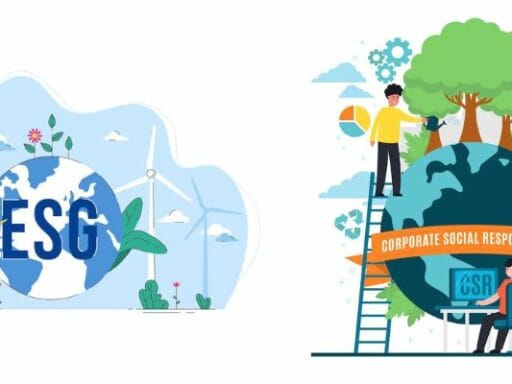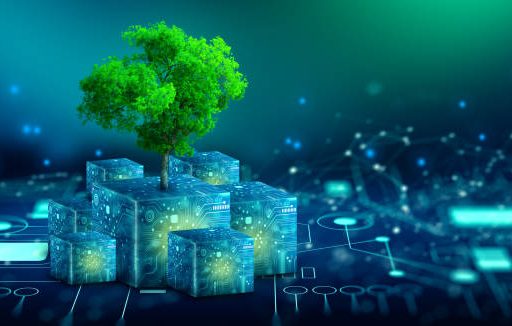Businesses are under more and more pressure to strike a balance between profitability and social and environmental responsibility in the quickly changing economic climate of today. In order to strike this balance and guarantee long-term prosperity while making a constructive impact on the environment and society, sustainable business models have become a popular strategy. Businesses may spur innovation, improve brand reputation, and satisfy the rising needs of ethical customers by incorporating sustainability into their fundamental operations. This article examines seven essential tactics that support successful sustainable business models, offering advice and practical examples to help companies on their sustainability path.
Embracing Circular Economy Principles for Sustainable Business Models
The ‘take, make, discard’ mentality of the conventional linear economy has resulted in substantial resource depletion and environmental devastation. On the other hand, circular economy-based sustainable business models prioritize resource efficiency and waste reduction. This entails making long-lasting goods, encouraging recycling and reuse, and developing closed-loop technologies that allow materials to be constantly recycled.
Companies such as IKEA, for example, are reconsidering their business practices to conform to the ideals of the circular economy. For real change, IKEA’s global circular strategy leader highlights the necessity of a significant mental shift and international cooperation. A major change in company operations and mentality is necessary to implement the concepts of the circular economy. Nonetheless, the advantages—which include reduced expenses and increased brand loyalty—make it an appealing tactic for companies looking to establish robust and sustainable operations.

Implementing Ethical Sourcing and Supply Chains
Transparent supply chains and ethical sourcing are essential elements of sustainable company strategies. They guarantee that goods are sourced ethically, taking into account the well-being of communities, employees, and the environment. Businesses may reduce risks, adhere to legal requirements, and satisfy socially conscious customers by putting an emphasis on ethical operations.
For instance, the Rainforest Alliance certifies a sizeable share of the world market for cocoa and collaborates with well-known companies to use regenerative agriculture and revenue accelerators. Through the integration of sustainable techniques and community-led conservation, their programs seek to assist millions of farmers by 2030.
Businesses develop their sustainable business models by integrating ethical sourcing and transparent supply chains into their operations. This not only promotes social and environmental well-being but also fosters consumer loyalty and trust.
Engaging Stakeholders for Collective Impact in Sustainable Business Models
The success of sustainable business models depends on including stakeholders, such as workers, clients, suppliers, and the community. Innovative ideas and the production of shared value can result from collaborative efforts.
The idea of “Sustainomy” suggests an economic model that unifies prosperity, people, and the environment into a unified system that encourages environmental stewardship and fair wealth creation. This strategy places a strong emphasis on strengthening emerging nations and the global middle class by expanding their access to capital, education, and market involvement. Businesses may create a sense of ownership and dedication by actively incorporating stakeholders in sustainability activities, which will result in more successful and long-lasting sustainable business models.
Innovating Products and Services Sustainably
Sustainable company models are fueled by innovation. Creating goods and services that satisfy ethical and environmental standards can expand markets and satisfy changing customer needs. For example, Refiberd’s creative use of AI and hyperspectral imaging in textile recycling earned it the CFDA x eBay Circular Fashion Fund. True textile-to-textile recycling is made possible by their technology, which correctly identifies clothing components and solves issues with complicated mixes and mislabeling. Businesses may stand out in the marketplace, comply with legal requirements, and support environmental preservation by putting a high priority on sustainable innovation. These are all crucial elements of strong, long-term business models.
Measuring and Reporting Sustainability Performance
A key element of sustainable business models is transparent monitoring and reporting. They enable companies to keep tabs on developments, pinpoint areas in need of development, and inform stakeholders about their sustainability initiatives.
Businesses are urged to pose important queries like:
- What does sustainability mean to us?
- What are our short and long-term sustainability goals?
- How do our customers perceive our sustainability initiatives?
Answering these queries aids in coordinating corporate procedures with environmental goals. Through the establishment of unambiguous indicators and consistent reporting on sustainability performance, companies may exhibit responsibility, cultivate confidence among stakeholders, and consistently enhance their sustainable business models.
Leveraging Technology for Sustainability in Sustainable Business Models
In order to advance sustainable company concepts, technology is essential. Technological advancements have the potential to drastically lower environmental footprints by enhancing energy efficiency and facilitating sustainable product design. The “Sustainomy” paradigm is based on the idea of “authentic intelligence,” in which AI complements human talents rather than takes their place. This strategy promotes infrastructural and human capital investments to foster long-term resilience and sustainable growth. Businesses may boost creativity, cut expenses, and improve operations by adopting technology innovations. These benefits are essential for creating and sustaining successful, long-term business models.

Aligning with Global Sustainability Goals
Aligning operations with global sustainability goals, especially the Sustainable Development Goals (SDGs) of the United Nations, is one of the most critical actions businesses can take when creating sustainable business models. These 17 objectives, which address issues like climate change, gender equality, responsible consumerism, and sustainable energy, provide a common framework for peace, prosperity, and planetary health. Businesses that connect their sustainability strategies with these global aims not only help to solve some of the most pressing issues facing the globe, but they also position their operations for the future by staying ahead of consumer-driven, environmental, and regulatory demands.
SDG 12 (Responsible Consumption and Production), for instance, may encourage businesses to cut waste, maximize resources, and improve supply chain transparency—all of which are essential components of robust sustainable business models. Similar to this, SDG 13 (Climate Action) urges businesses to lower their greenhouse gas emissions and use low-carbon technology, which may greatly lower operational risks and boost productivity. Additionally, global alignment increases stakeholder confidence. Businesses are under growing pressure from authorities, investors, and consumers to show how they affect the environment and society. Businesses may increase their reputation and draw in more ethical investment by disclosing how they support the SDGs.
Additionally, governments and financial institutions provide money, procurement preferences, and incentives to businesses that support national and global sustainability goals. For companies that use sustainable business models based on SDG alignment, this offers a competitive advantage. Incorporating global sustainability goals is important for long-term profitability, resilience development, and staying relevant in a world that is changing quickly. It is not simply about corporate social responsibility. SDG alignment is now a wise, strategic need for companies who are prepared for the future.
Successful Companies and Their Sustainable Business Models
| Company | Sustainable Business Models in Action | Impact Achieved |
|---|---|---|
| Patagonia | Uses a circular economy model by recycling, repairing, and reusing apparel. Ethical sourcing of materials and fair labor practices are core. | Reduced textile waste, increased customer loyalty, strong brand equity based on environmental activism. |
| Unilever | Integrated sustainability into every brand via its Sustainable Living Plan. Focus on renewable energy, waste reduction, and water efficiency. | Over 50% of growth now comes from sustainable brands; improved efficiency and trust from consumers. |
| IKEA | Adopted circular design principles. Products are modular and recyclable. Focus on renewable energy and material innovation. | Committed to becoming climate positive by 2030; reduced emissions, increased product reuse. |
| Tesla | Built an innovation-driven model focused on clean energy and electric vehicles. Invests heavily in sustainable battery storage. | Transformed the auto industry; massive market cap increase and disruption of fossil-fuel transport. |
| Interface | Pioneer in sustainable flooring. Introduced a closed-loop manufacturing process and zero-waste production goals. | Achieved 96% renewable energy usage at global sites; set industry standard for green operations. |








